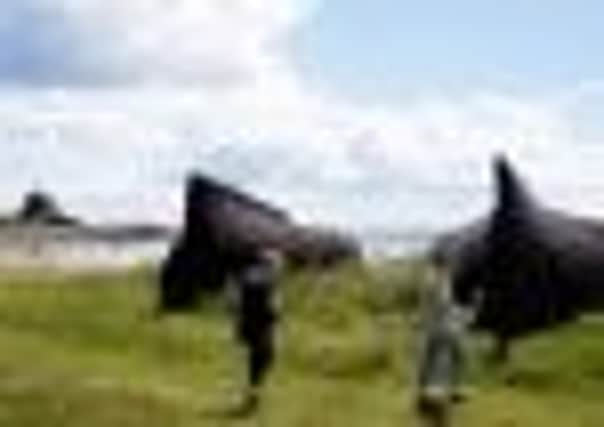Turning of the tide


For 10 hours a day, Holy Island – just over a mile off the Northumberland coast, is just that, an island. The rest of the time, it’s connected to the mainland by a tenuous causeway. For those who live there the moon and its effect on the water here on earth rules their lives.
“Before you do anything, you need to consult which date you’re going to do it and you’ve got to get your tide book,” says Dick Patterson. A sprightly 67-year-old, he has lived here all his life and for 40 years until he retired recently he was the postman. “We’ve all got tide books, and we understand the tides, so we’ve got to plan our hospital visits, shopping trips, football matches... you’ve got to do everything around the tides. We’re cut off for 10 hours out of 24... twice a day for five hours, and it changes every day by about 50 minutes, so every 14th day the tide is more or less the same time.”
Advertisement
Hide AdAdvertisement
Hide AdUntil the tarmac causeway was built in the 1950s, the only way on or off the island was across the old “pilgrims causeway” – still marked out by a series of wooden posts – by foot, by horse and cart or in an old Model-T Ford taxi which could drive across the sands at low water because its body was far enough off the ground.
Of course, being cut off from the mainland did have its advantages, especially in the days when the licensing laws, and closing time, were enforced more strictly than it is today.
“It was handy when the police were on duty, “ adds Dick Patterson. “When the tide was in, they couldn’t get here so no-one bothered closing their bars up. At one time, before my time, there were 13 pubs.”
One of them, the Castle Hotel, has now been turned into a heritage centre by the Island’s Development Trust where an exhibition called Lindisfarne 793 features the first recorded Viking raid. “They burnt down the priory, as they would, all good Vikings like to do that, and chased off the monks,” says Dick, the chairman of the island trust. “The monks for years travelled around northern England with the remains of Cuthbert and the Lindisfarne Gospels. Then they eventually settled at Chester-le-Street, and then Durham, and St Cuthbert’s remains are in Durham Cathedral now, and that was the founding of Durham Cathedral.”
Advertisement
Hide AdAdvertisement
Hide AdThe Holy Island of Lindisfarne is known as the cradle of Christianity in the North of England. It was King Edwin, and his conversion to Christianity which brought St Aiden and his monks from Iona to the Northumbrian coast to convert the locals. The king lived at Bamburgh, just along the coast. The more recent castle is high on a rock four miles south of Holy Island and can be clearly seen. Lindisfarne has its own castle, built as a 16th century Tudor fort and converted into a private house by the architect Edwin Lutyens at the beginning of the 20th century. It contains a famous walled garden by the renowned garden designer Gertrude Jekyll. There are also the ruins of the priory, founded in 635 by St Aiden.
Most of Holy Island is farmland, sand dunes and mud-flats which are home to vast numbers of sea birds, including the pale-bellied brent geese, which come to the island every year from Spitzbergen in Norway.
The area around the tidal mudflats on both the island and the neighbouring mainland have been designated the Lindisfarne National Nature reserve, which enjoys some of the highest levels of protection for wildlife sites in the world. It is a Ramsar site, which means it is classified as Wetlands of International Importance, but as well as the birds, there is the sheer tranquility of the vast foreshore.
Dick Patterson says the best way to enjoy the island is to stay and explore. “It’s nine miles around the shoreline and there’s out there you probably won’t see a soul, and yet the village can be full of people milling around the castle, the priory and here.”
GETTING THERE
Advertisement
Hide AdAdvertisement
Hide Ad* A bus service, the 477, runs on Wednesdays and Saturdays from Berwick Upon Tweed railway station, and on extra days during the final week in July and during August. Information is available from traveline on 0871 200 22 33, or Northumberland County Council’s website http://www.northumberland.gov.uk
* For those wishing to stay the choice is either bed and breakfast or a holiday cottage. Camping and caravaning are not permitted.
* Guest Houses: Rose Villa, Fiddlers Green, 01289 389 268. Double En suite £65 per room. The Bungalow 01289 389308. Rooms from £75 per night to £85 The Lindisfarne Hotel, 01289 389273.